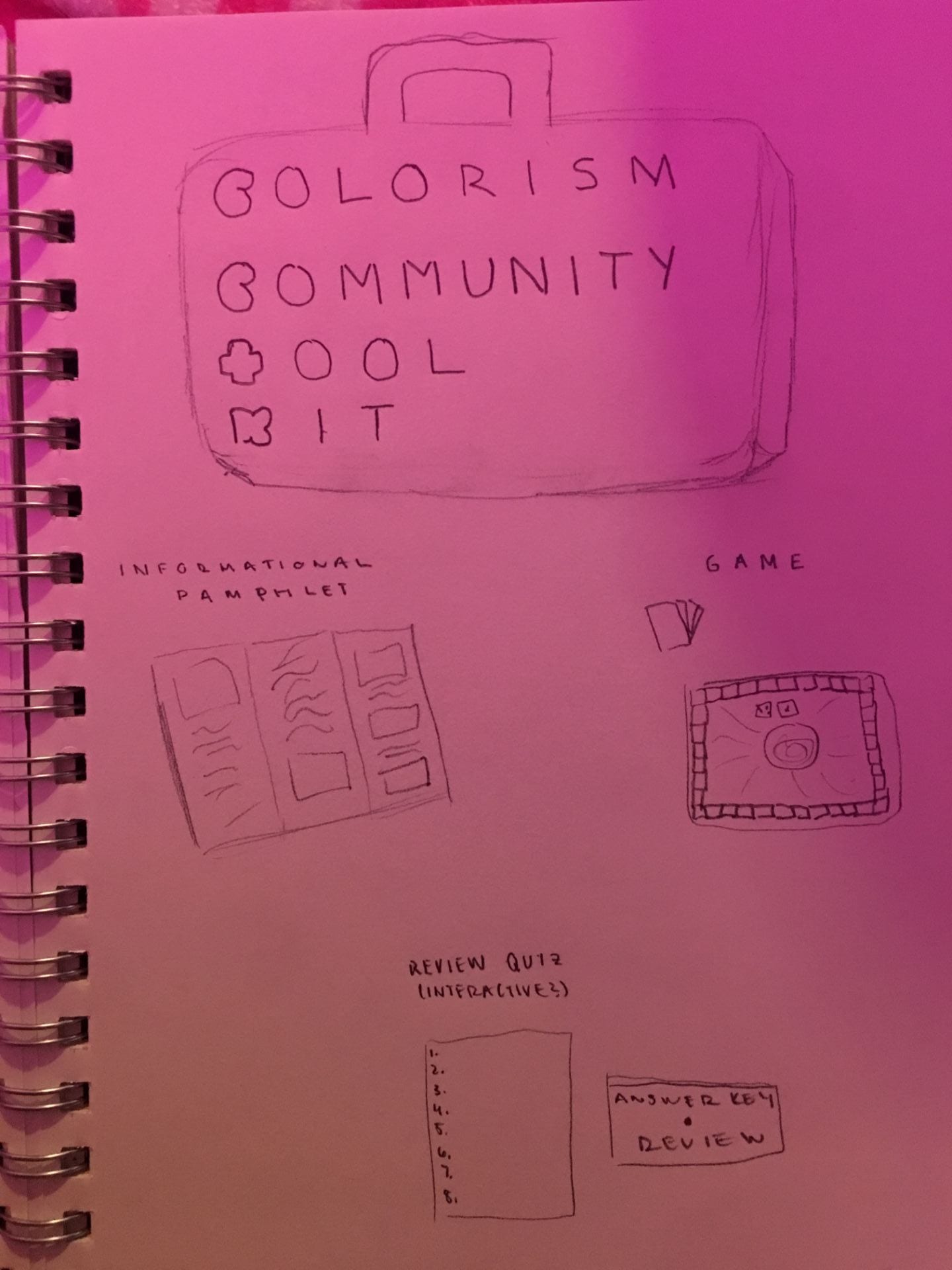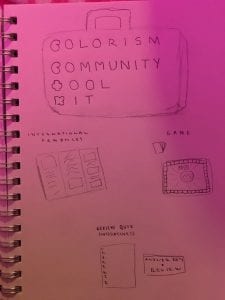Design Brief: The concept of a community toolkit is one that is meant to serve a purpose and bring awareness to certain issues within a community. Knowing this, I was immediately drawn to the issue of colorism in America. Colorism is universally known as a sector of racism; discrimination based on one’s skin color. This can occur outside of one’s racial group, as well as within one’s race. Unfortunately, however, many people are unaware of what colorism is and how colorism works. This, in my opinion, is the first step to eradicating the problem. My goal in creating my community toolkit is to make people aware of colorism so that people can understand what it is, why it’s wrong, and stand up for each other so that it never happens again. I plan on doing this by including 3 different functions to the toolkit; an informational pamphlet, a game, and a review quiz. The informational pamphlet will act as the introductory part of the toolkit. The pamphlet will inform the reader on what colorism is with examples, statistics, photo examples, and much more. Once the toolkit user finishes the pamphlet, they will fully understand the concept of Colorism and will be able to move onto the next step. The next portion of the toolkit is the game. The game will be serve as more of a hands-on / visual way of understanding what colorism is and how much of an issue it is in our society. Educational games have been shown to increase one’s understanding of a topic, so this is another essential part to the kit. Lastly, the third element is a test / review. This will allow whoever uses the toolkit to evaluate how much of their new knowledge on colorism has been retained. Again, the reason why world issues like colorism and racism are still around is because people don’t understand them and don’t always realize when they may be negatively contributing to them. Ultimately, my goal with the toolkit is to counter this so that colorism eventually ceases to exist for many people.
SYSTEM JUSTIFICATION + PROBLEM IDENTIFICATION: What is colorism? When we think about issues concerning skin color, we as a society usually associate this with racism. Since colorism is a smaller sector of racism, many people either don’t know what it is or they don’t know how to talk about it. This is the main reason why colorism is the focus of my toolkit. When it comes to discrimination against one’s skin color, the correct term for this is colorism, not racism. Colorism is a global issue that has been going on for centuries but is just now being talked about more openly. This discriminatory way of thinking is displayed through the media, music, beauty, and so many more forms of human interactions. Throughout history, racial issues have only been overcome through active conversation and more education on the topic. This is why more people within the systems affected need to start / continue educating all people. The problem won’t be solved if the ones who aren’t negatively affected don’t understand. Racist and colorist individuals continue to be racist due to lack of education and systematic racism / colorism. If we go more into detail on the systems that are affected by colorism, we know that individuals within the minority system are the victims. When I say minorities, I mean non white passing minorities who cannot benefit off of white privelage. Many people who are racist or colorist deny the fact that the minority system is negatively affected by colorism. However, there is statistical evidence that proves them wrong.In fact, we see this constantly through statistics. For example, light skinned female prisoners get 12% less jail time than dark skinned prisoners. Also, lighter skinned immigrants make 8-15% more than similar immigrants with a darker skin complexion. Ultimately, all of this evidence shown through history, statistics, and the media is the reason why colorism needs to be talked about by all races. We can’t fix the problem if the people causing it don’t even know there is a problem. 


System Selection + Problem Identification: 300 WORDS

